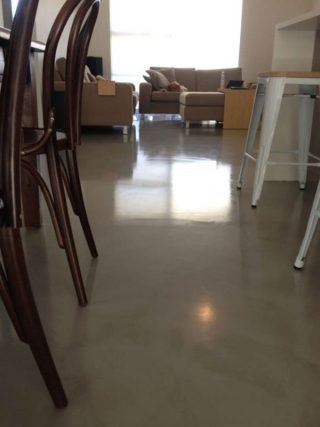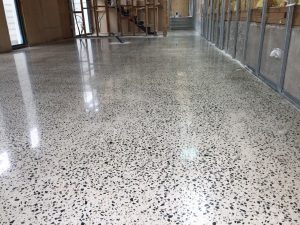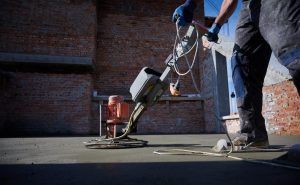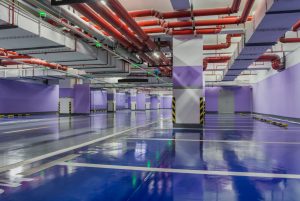The advantages of polished concrete floors are not difficult to comprehend; in fact, you can locate descriptions of these advantages in the blogs of almost all flooring companies. The term “polished concrete” has become common parlance, and we have done an excellent job of marketing the sector as a whole. Why, out of all the available numerous kinds, should you choose burnished finish concrete floor?
It is simple to comprehend the reasons behind the ever-increasing popularity of burnished finish concrete floor among real estate developers, builders, architects, and private homeowners. The multipurpose material is very long-lasting, may be used for several decades, and has one of the lowest maintenance requirements of any surface. It also seems to be rather delicious.
However, in response to the growing demand, the sector is undergoing significant change to accommodate the various requirements of clients. It would seem that we are no longer using the term “concrete” in its traditional sense. The term “concrete” is currently used to refer to an extremely broad category of building materials, including mechanical polish, salt and pepper concrete floor finish, burnished finish concrete floor, grind and seal concrete, honed concrete, and epoxy flooring.
Concrete that has been burnished and other types of finishes are often confused with one another. In the end, polishing and burnishing seem to the inexperienced eye to be the same technique from a visual standpoint. You don’t want to ask for a burnished finish if what you want is a polished one since the result would be a huge letdown for you if you do so. Burnishing and polishing are two very distinct processes. Therefore, let our eyes that have been trained to explain to you the difference between the two methods.
Two Different Types of Burnished Finish Concrete Floor
The two most common varieties of burnished concrete are as follows:
1. Burnishing with a Steel Trowel
In order to get the desired level of surface shine using this procedure, trowelling is performed. This may be accomplished by trowelling by hand or through trowelling using a machine. The process of burnishing concrete is affected by a wide variety of parameters, including the time of placing the concrete, the slump, the compaction, the finishing procedures, and the curing.
To get a uniform and high-quality finish, certain characteristics of the concrete must be stringently enforced. In general, the strength of the concrete needs to be at least 32 MPa to guarantee that there is enough fine material available to accomplish a satisfactory surface finish.
In most cases, the steel trowel burnishing method calls for a concrete slump of between 80 and 100 millimetres, with a tolerance of between 15-20 millimetres. Burnishing is done to achieve a surface that is smooth, impermeable, and long-lasting while also being devoid of any remaining trowel marks.
2. Burnishing using Waxes or Resins
This particular method of burnishing involves applying waxes and resins to the surface of the concrete floor in the form of toppings to bring out its shine. In addition to floor waxes and liquid polishes, resin-based coating treatments and liquid floor polishes may be utilised to achieve a burnished sheen.
These are multi-layer treatments that, after the prescribed amount of time for curing, are burnished or polished using polishing equipment. The quality of the coating substance, the concrete density, and the method of burnishing all have a role in determining the degree of shine that may be attained.
When Is the Appropriate Time to Burnish and Polish Concrete?
The cost of a burnished finish concrete floor is much lower than that of a conventional polish due to its significantly reduced time and effort requirements. Because of this, it is an excellent choice for clients who are worried about their spending limits, and it provides businesses that specialise in surface preparation and concrete restoration with a more cost-effective alternative to the traditional, multi-step concrete polish. Even in municipal areas and retail sites, it may be an economical method to freshen a drab concrete surface. We said earlier that it is also an excellent option to use for warehouses and logistics centres, as well as other spaces where the function is essential above looks.
The Benefits of Burnished Concrete
- The burnished finish concrete floor is long-lasting and has an incredible amount of strength. It can resist the weight of strong foot traffic and equipment.
- A polished concrete floor that is built correctly, sealed properly, and maintained regularly may have a lifespan of more than a hundred years.
- Since the surface is uniformly smooth and flat, upkeep and cleaning are relatively simple. Dust must not be allowed to settle on the surface, thus care must be exercised in this regard.
- The surface, after it has been properly polished, is impervious to water.
Drawbacks Associated with Burnished Concrete
- Since the process of trowelling the concrete makes it thick and very resistant, the concrete itself becomes quite hard. Because of this, standing on the concrete for extended periods may be very unpleasant.
- burnished finish concrete floor has a tendency to not be very good at retaining heat, which is another one of its many drawbacks. That indicates that the top of the floor will feel chilly during the winter months.
- If concrete flooring is not properly polished and sealed, it will be very vulnerable to the infiltration of moisture.
- The loud noises that may be heard while walking on the surface are a result of its hardness and strength.
Renucrete prides itself on offering trusted and high-quality polished concrete floor services. If you are looking for polished concrete contractors Sydney, we’re at your service! Call us now and get your questions answered.
Get a quote for our concrete polishing services by filling out the form below:




